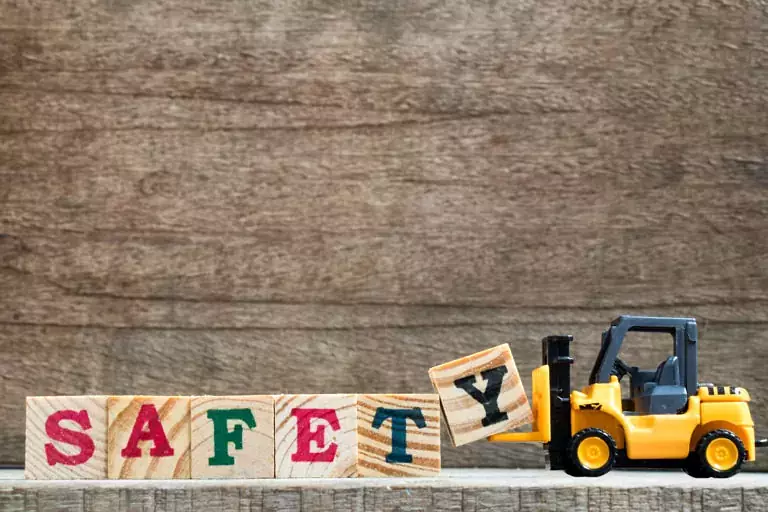 To celebrate National Safety Month, we have comprised a top ten list of vital forklift safety rules that the novice operator to the seasoned veteran can use the next time they get behind the wheel. Are you looking to bolster safety in your forklift operations? Look no further than this comprehensive guide to enhance the welfare of employees in your material handling enterprise today!
To celebrate National Safety Month, we have comprised a top ten list of vital forklift safety rules that the novice operator to the seasoned veteran can use the next time they get behind the wheel. Are you looking to bolster safety in your forklift operations? Look no further than this comprehensive guide to enhance the welfare of employees in your material handling enterprise today!
1) Check Tires Before Use – It is essential to check your tires before each and every forklift use. Operating a forklift with either underinflated or overinflated tires can result in blow-outs or vehicle fires. Moreover, handling is adversely affected if tires are not inflated to the appropriate pressure prior to use.
2) Operate Hands Free – Another rudimentary rule to follow is keeping your hands free at all times when you are behind the wheel. With cellular phones and portable electronics being enabled without wires in today’s age, it has never been easier to keep your hands on the wheel in case any sudden movements need to be made.
3) Check Battery and Hydraulic Fluid Levels – Coinciding with the first point on this list, it is also essential to check the battery and hydraulic fluid levels prior to putting the vehicle in use. Failing to do so can result in a malfunction of the forks themselves which can cause an array of collateral damages.
4) Do Not Use A Vehicle That Has Not Been Inspected – A vehicle that has not been inspected is not safe to operate. Therefore, if a forklift remains on the floor but is not up to date on inspection it is very dangerous to get behind the wheel as there can be a wide range of issues that have not been accounted for.
5) Do Not Speed – It is understandable that most workers want to get the job done as quickly as possible. However, when it comes to observing speed limits it is premium to drive on the slower side. Driving a forklift at speeds in excess can result in a pedestrian strike, tip-over, or collision with another apparatus; all of which could be more readily avoided if a driver has more time to react. Speeding inhibits that ability.
6) Do Not Pick Up Other Riders – According to Mike Wilson of Creative Safety Supply, all forklifts are designed for the driver to operate only. Yet, in some instances there are operators who feel inclined to give a colleague a ride. This is a big no-no as it creates an uneven balance in the vehicle and can lead to a tip over.
7) Come To Slow Stops – Stopping abruptly can cause loads to fall from the forks which can potentially injure any staff and personnel responsible for unloading the materials.
8) Never Unload On Ramps – Unloading on a ramp can also throw off the balance of the forklift, create injury scenarios for workers who will likely be lifting unevenly, and also cause the vehicle to move against its own volition. All of which poses the threat for an accident.
9) Never Leave A Forklift Running Unattended – It is important to ensure the vehicle is off and parked in its designated space at the end of every shift. Furthermore, it is imperative to make sure the parking brake is enabled so the vehicle remains stationery.
10) Make Sure The Operator is Qualified – Operating a forklift without the appropriate credentials, training, or licenses can result in fines and a broad array of liabilities.
